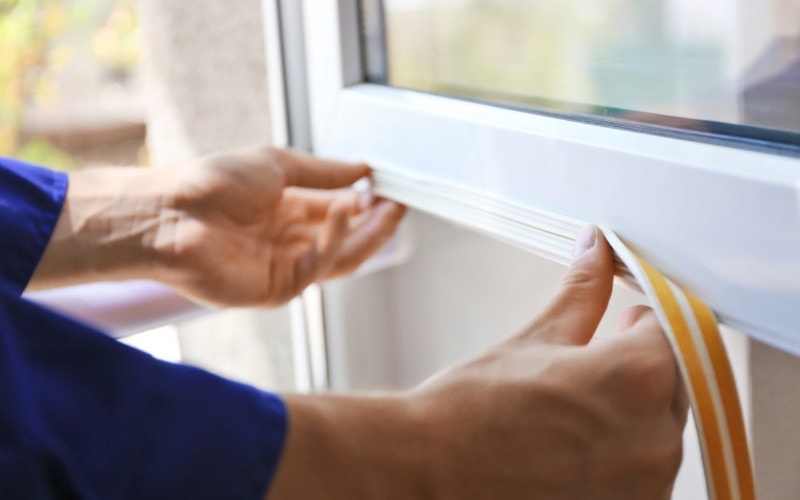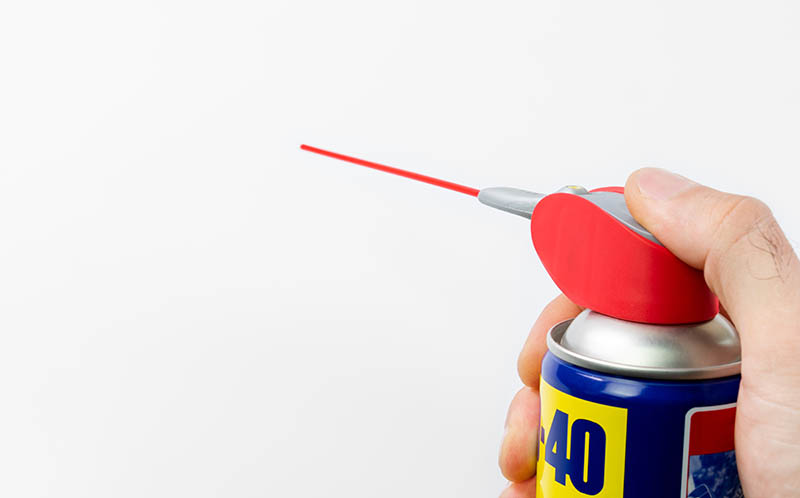What Is WD-40 Used For? 6 Main Uses
-

- Last updated:

Those who believe water is the universal solvent have clearly never worked with WD-40. WD-40 or “Water Displacement 40th Formula” can be highly useful in a number of situations—it can be effective as a de-clogger, diluting solution, rust inhibitor, lubricant, surface cleaner, and lots more.
Here are some of the main uses for WD-40.

The 6 Main Uses of WD-40
1. Pre-Soaking Nuts and Bolts
It’s hard to walk into any garage and not find at least one spray can of the WD-40 solvent. Most mechanics really love to use this solution on different bolts and nuts, right before they start assembling the different parts of the vehicles. WD-40 often provides a deep level of lubrication that makes the whole process smooth and seamless—even if the parts are old and plagued by rust. It usually stays on for a very long period, making it easier to remove and replace the fasteners.
2. Preventing Corrosion and Rusting

In the world of mechanics, corrosion is not only a dangerous but also a costly problem. It’s basically the byproduct of an electrochemical reaction between the atoms of a metal surface and oxygen. It’s because of corrosion that you’ll hear people complaining about flooding bathrooms, leaks in chemical plants, oil pipelines breaking, and even bridges collapsing.
Painting surfaces that are susceptible to corrosion and rusting to protect them from breaking down is also a great option, but WD-40 does a far better job.
3. Degreasing Surfaces
By definition, a solvent is any liquid substance that has the ability to dissolve a particular solute, to create a solution. WD-40 is a solvent because it can cut into grime, thus forming a solution that’s easier to clean with soap.
In extreme situations, like when you’re trying to remove a lot of grease or grime off your hands, just spray a small amount of WD-40 on the affected area, rub your hands together for a couple of seconds to completely dissolve everything, and then rinse with water. Apply some soap right after, rub your hands one more time, and then rinse a second time.
Of course, WD-40 displaces water, so it will dry out your skin a fair bit.
4. Removing Bumper Stickers and Decals

Bumper stickers can be stubborn at times. The removal process can quickly ruin your entire day, especially if part of the sticker inadvertently rips off, leaving the other part securely attached. Just blast the remaining section of the sticker with WD-40 lubricant and saturate the whole area with a paper towel.
The sole task of the towel is to ensure the lubricant sits on the sticker for as long as you need it to. After a couple of minutes, you’ll start noticing some changes in the sticker, and that will be your cue to try peeling it off again.
5. As a Lubricating Agent
WD-40 is essentially lightweight oil. Meaning, it has some (if not all) of the lubricating properties that define typical oil. Demulsibility is one of those properties, and it’s described as the ability of oil to separate itself from water. It’s the reason why we often apply WD-40 on various tools and equipment before putting them to use.
For example, if you’re planning to get rid of the snow that has accumulated on your driveway, you’ll need a shovel. Applying the WD-40 on the shovel before you start shoveling will prevent any snow from sticking to its surface and make it easier for you to clean it right after.
6. Applied On Weatherstripping

Weatherstripping is very effective at ensuring drafts of air don’t get into your home through gaps left in the windows or doors. During winter, we normally use it to keep all the heated air in, and the cold air out. But during summer, the roles are reversed. Keeping the weatherstripping material pliant is never easy, as it dries and cracks without regular maintenance—the kind of maintenance that involves the frequent application of WD-40 solvent.
 What to Avoid Applying WD-40 On
What to Avoid Applying WD-40 On
1. Electronics

Avoid using WD-40 on iPads, iPhones, and other similar electronic products as WD-40 is powerful enough to break down plastic. So, once it seeps through the gaps, all the components made of plastic will be damaged.
2. Door Locks
If you ever find yourself in a situation where you’re thinking of using WD-40 lubricant on a padlock, door lock, or pin tumbler lock, it’s better to use graphite powder. It’s guaranteed to protect the lock’s internal mechanisms, unlike WD-40, which is notoriously known to wear down such parts prematurely.
3. Bike Chains & Door Hinges

There are many bike-specific lubricants that are highly effective at reducing drivetrain wear, friction, and preventing corrosion. They are also designed to ensure the chain’s engagement with the chainrings and sprockets remains smooth at all times. WD-40 is certainly not an alternative because it tends to attract a lot of dirt and dust. Have you ever wondered what those ugly black streaks on your door hinges are? Well, now you know.

WD-40 Origins
WD-40 was born in 1953, in San Diego, California. The whole idea was brought to life in a very small laboratory, set up by the Rocket Chemical Company. At the time, Rocket Chemicals was still at its fledgling stage and thus could only afford to employ three chemists. They ended up creating a wide variety of unique degreasers and rust-prevention solvents that could be applied in the aerospace industry.
Creating the ultimate solvent was no walk in the park, as they had to first figure out what ingredients were appropriate for the solution, and then get the right ratios. But on their 40th attempt, they experienced a “Eureka” moment. WD-40 was born, and the chemists decided that the brand should maintain the same name that they used to describe the product while it was at its developmental stage.
When it was introduced to the market, the first company to commercially give it a test run was Convair. They were aerospace contractors who sought to shield their Atlas Missile’s outer skin against corrosion and rust. This solvent impressed them so much that some of their staff members snuck several cans out of the base to try it out at home!
A few years later, Norm Larsen—the company’s founder and president—decided to replace the original cans with aerosol cans. His ultimate goal was to expand his customer base by including potential consumers who would like to apply the solvent in workshops and garages.


Conclusion
WD-40 has definitely evolved over the years. Its creators thought they were producing something that would help protect aerospace hardware but ended up creating something far more universal. A degreaser that also acts as a lubricant and can protect metal surfaces from corrosion. It’s something that every homeowner should have on the shelf. What is WD-40 used for? Now you know!
See Also: 22 Types of WD-40 — Everything You Need to Know!
Featured Image Credit: Benedek Alpar, Shutterstock
Contents
 What to Avoid Applying WD-40 On
What to Avoid Applying WD-40 On